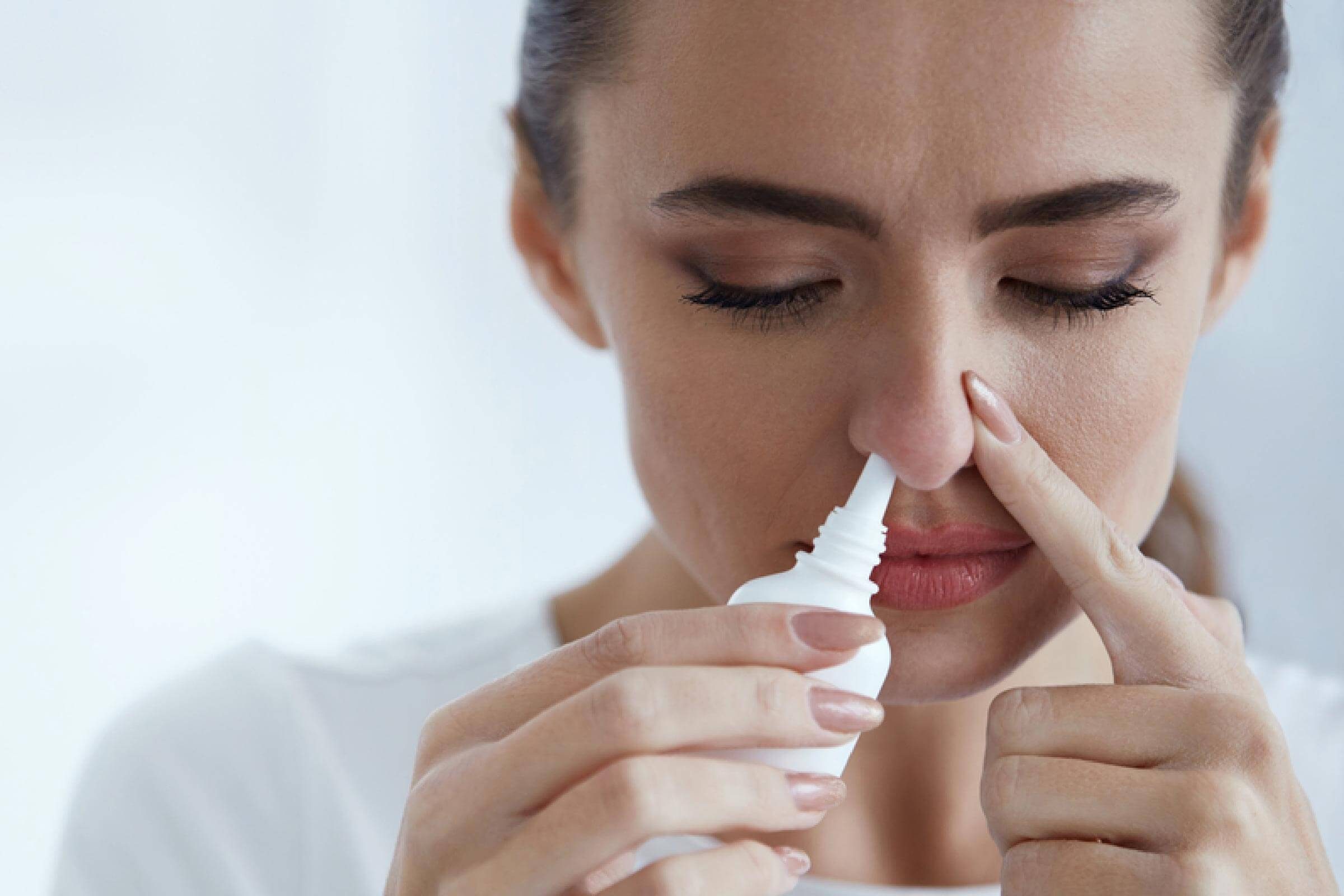
The importance of prevention
Allergies may feel like an old curse, especially when they come back season after season. The good news? People with allergies now have more options than ever to help clear up their symptoms, says Jennifer Caudle, a board-certified family medicine physician and associate professor at Rowan University.
“There are so many different allergy treatments with new ones coming out all the time. There are different classes of medications, types within each class, and ways to take them like pills, capsules, nasal sprays, liquids and even injections,” says Caudle. “This is great but it can feel overwhelming trying to figure out what will work best for your particular allergies and symptoms which is why it’s so important to talk to your doctor.”
That’s why prevention is everything when it comes to allergies.
“Medication and other medical treatments can help but they’ll work so much better if you take some steps to help yourself,” she says. One of the best ways to prevent allergies before they start is to figure out your allergy triggers—through testing or trial and error—and set up your environment to minimize them.

Keep your windows closed
One of the best things you can do to stop allergies before they start is to keep your doors and windows closed, especially when you’re sleeping, Caudle says. “Closing doors and windows in the car and home can limit pollen exposure and reduce the severity of your response,” she says.
Here are the unexpected reasons you might suffer from spring allergies.

Up your laundry game
Your clothing can be a major source of irritating pollen and mould spores, says Murray Grossan, MD, an ear, nose and throat doctor in Los Angeles and author of The Whole Body Approach to Allergy and Sinus Relief. It’s crucial to get them off your clothes so you don’t contaminate your house.
Start by removing your outer clothing outside and vigorously shaking it out. Then launder your clothing with an anti-allergy, hypoallergenic detergent, followed a hot trip through the dryer. Avoid the temptation to let clothing, towels, or bedding air-dry outside; while you get points for eco-friendliness, this makes them pollen magnets.
Discover the ways you’ve been doing laundry wrong.

Allergy-proof your room
You spend a lot of time in your living spaces, like your bedroom and TV room, so it makes sense to minimize allergens in those areas, Caudle says. She recommends using a mite-proof mattress cover and anti-allergenic bedding in addition to regular laundering. A HEPA air filter can also go a long way in detoxing your air and reducing your symptoms.

Check your fruit bowl
Oral allergy syndrome (OAS) is where airborne allergens may sensitize you to those in food and affects 50 to 75 per cent of seasonal allergy sufferers, says Grossan. For example, the proteins in certain fruits such as peaches and apples are similar to the proteins from birch tree pollen so you may have a reaction to both the tree pollen and eating raw peaches and apples, although the symptoms differ. Those with OAS may experience a tingling or itchy throat, or swollen lips.

Try a nasal steroid spray
If you’ve done everything you can and you’re still stuck with itching, wheezing, coughing, watery eyes or a runny nose, try a steroid spray, Caudle says. In 2017 guidelines, the Joint Task Force—a coalition from the American Academy of Allergy, Asthma & Immunology and the American College of Allergy, Asthma, and Immunology—recommends that people start with a nasal steroid spray because it’s best for quelling symptoms. However, if your symptoms don’t respond, check out the options below—and chat with your doctor—to come up with the best allergy-fighting cocktail for you.
Is it allergies or pink eye? Find out how to tell the difference.

Try a dry spray
If you can’t tolerate traditional liquid nasal sprays, chat with your doctor about the dry aerosol nasal steroid spray Qnasl, says Derrick Ward, MD, of Kansas City Allergy & Asthma Associates. This prescription med targets seasonal and year-round allergies when used once daily. One hitch, Ward points out, is that many insurance companies require patients to try over-the-counter meds first; it can be a challenge to get a Qnasl prescription covered. Still, if you’re avoiding using liquid sprays because of the comfort factor, talk to your doctor about this option.

Take meds in advance
Don’t wait until you’re sneezing up a storm to take allergy medication. New York City allergist and immunologist Clifford Bassett, author of The New Allergy Solution, recommends beginning allergy medication up to two weeks prior to the season kicking in. He puts his patients on allergy alert; your doctor can inform you more specifically about when you should start.
Do dogs make your heart go thump, your eyes water and your nose tickle? Check out the best hypoallergenic dog breeds.

Consider immunotherapy
Allergy shots have been around for a century and can work well for many types of allergens. However, allergists can now offer sublingual therapy: You place a tablet under your tongue daily that contains small amounts of the allergen. It builds tolerance so that your body no longer reacts to it.
You can get sublingual pills for both ragweed and grass pollen allergies, and there’s a relatively new sublingual treatment for dust mites called Odactra. (It was approved by the Food and Drug Administration in 2017.) “This is nice for patients who don’t want to do allergy shots or don’t have time to come in and get them,” says Ward. For grass and ragweed allergies, you’ll need to start treatment three to four months prior to the onset of the season, so plan ahead.

Ask your doctor about drops
Some doctors are using sublingual drops (they contain the same active ingredients as allergy shots) for allergy immunotherapy, explains Ward. The drops allow docs to treat a broader range of allergies than they could with the sublingual pills, he says, but the treatment is off-label—it hasn’t yet been approved by the FDA. If you want to try this approach, you’ll need to see an ear, nose, and throat specialist or your general practitioner; also note that insurance is unlikely to cover the cost.

Get allergy tested
You may know you’re allergic to something—but not know exactly what. Is it pollen? Grass? Mould? Dust mites? That’s why getting tested to pinpoint exactly what’s bothering you is so important, says Ward. With that info, you can tailor your treatments to deal with the exact culprit, which is far more effective than guessing. Skip the at-home tests though as they are not accurate or reliable.
Even with the advancements in sublingual therapy, it doesn’t guarantee you can go shot-free. The other benefit of allergy testing is that it will help you choose between sublingual therapy and allergy shots. “If I test someone and they’re allergic to multiple things, giving them a tablet for ragweed isn’t really beneficial. But if they also have allergies to animals or dust mites, that’s where allergy shots shine—I can put all of that in a shot,” says Ward.

The personalized treatment approach
Sometimes, it can feel as if you’re throwing everything you have at those spring allergies and getting nowhere. That’s why an allergist’s personalized treatment approach can be a game-changer: “There are many, many strategies that are helpful, cost-effective, and will get the job done. It takes an extra few minutes to see an allergist who can create an individualized pollen calendar for you, which you can use to reduce and prevent symptoms,” saysBassett. Ask your doctor how you can best prepare for the season ahead.
From optimizing your sleep to knowing which wood products are safest for your den, these tips will help you lead a healthy and hazard-free life.